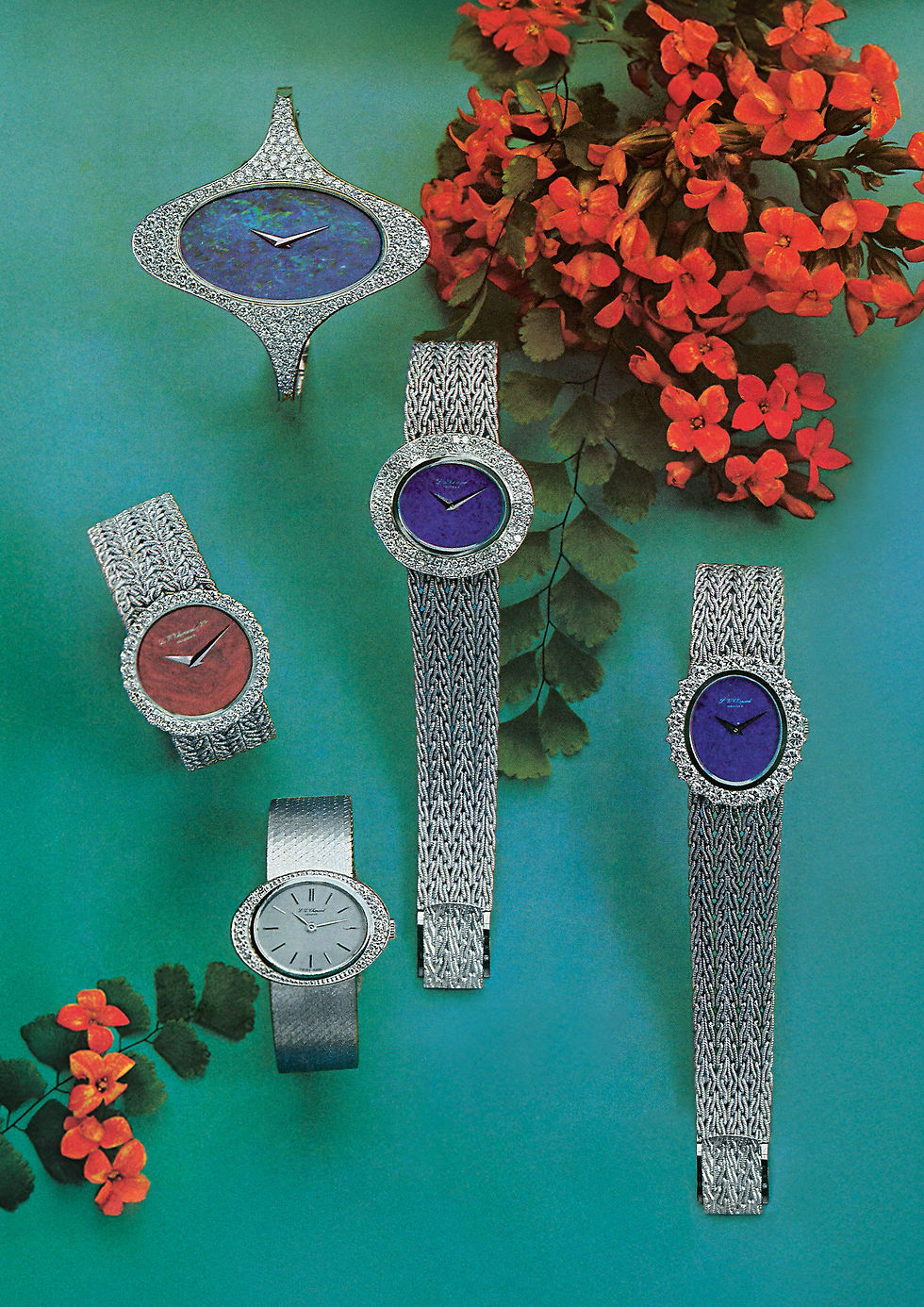How the most famous engagement ring in the world inspired Garrard’s much-loved 1735 collection
- Dunes Team

- Nov 24, 2020
- 3 min read
Updated: Nov 26, 2020
Garrard has a long and distinguished history of crafting exceptional jewels for royalty. Some of the House’s most regal creations, for example the setting of the Cullinan I, the world’s largest cut and colourless diamond, in the Sovereign’s Sceptre, are legendary, while others are true icons of their time, namely Princess Diana’s sapphire and diamond cluster engagement ring. Among the most famous royal jewels ever crafted by the House, the enduring influence of the cluster-style design continues to inspire jewels at Garrard today.

Throughout its history, Garrard has worked closely with the British royal family, and royalty around the world. Its first royal commission came from Frederick, Prince of Wales in its founding year, sparking a long and fruitful relationship with British royalty that reached its apogee in 1843, when Queen Victoria appointed Garrard as the first official Crown Jeweller. The House has served every British monarch since.

Among the many pieces of royal regalia created by Garrard is Queen Mary’s consort crown. Set with more than 2,000 brilliant cut and rose cut diamonds, today it is on display as part of the Crown Jewels at the Tower of London. Another is the stunning sapphire and diamond cluster brooch given to Queen Victoria by her husband Albert on the eve of their wedding, which the monarch wore the next day, pinned to her dress, as her “something blue”.

Diana chose her sapphire engagement ring from Garrard in 1981. Encircled by a halo of diamonds set in 18 carat white gold, the deep, intense blue colour of the 12-carat oval blue sapphire, discovered in Ceylon, now Sri Lanka, was magnificent, enhanced by its exceptional lustre. Displaying the exquisite taste for which she became so famous during her life as a royal, within just a few days, Diana’s ring would be known the world over. “It’s a wonderful jewel,” says Sara Prentice, Creative Director at Garrard. “The sapphire is astonishingly beautiful, and the proportions of the ring and the size of the diamonds work very well together.”

Queen Victoria’s obsession with beautiful jewellery saw an explosion of jewels during her reign featuring the cluster setting, the most famous of which was the monarch’s beloved sapphire and diamond brooch. In the years following the royal engagement, Diana’s Garrard jewel sparked a great love affair with sapphire cluster engagement rings among future brides that continues to this day.

The cluster setting, which is prominently showcased in Garrard’s 1735 and 1735 Double Cluster jewellery collections, soon became synonymous with the House. Interpreting Diana’s engagement ring in sapphires, alongside rubies, emeralds and aquamarines, the collections include precious pendants and earrings and an enchanting collection of engagement rings, with each jewel starring a beautiful oval or round centre stone framed by a radiant single or double halo of round diamonds. “The cluster of diamonds around the edge amplifies the vibrant hue of the coloured stones,” says Prentice. “All of our designs at Garrard are rooted in our heritage, and we continue to capture the elegant classicism of Princess Diana’s engagement ring in our 1735 jewels.”

Echoing its timeless silhouette, the House’s collection of engagement rings includes 1735 and 1735 Double Cluster designs that remain among the most popular ways of commemorating love at Garrard. “We are always focused on the little details, so the collection has been refined over the years to suit contemporary tastes,” says Prentice. “We’ve cleverly raised the centre very slightly so a wedding band can fit underneath and sit flush against a 1735 engagement ring.”

A new chapter in the history of Princess Diana’s engagement ring was written when, in 2010, Prince William chose to propose to Catherine, Duchess of Cambridge with the same Garrard engagement ring that his father had given to William’s mother, Diana. As this royal jewel, passed down through generations, takes on new meaning and sentiment upon Catherine’s hand, Garrard continues to honour this iconic ring, one of its most historically significant designs, in the 1735 and 1735 Double Cluster collections.






Comments